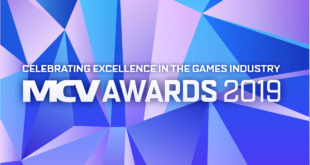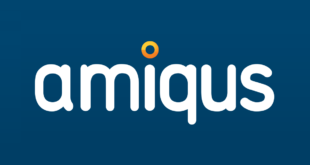This year’s big LA show had the highest quality line-up ever seen at our annual trade event, says Michael French, but the best games were also me-too games, and the biggest announcements only addressed bigger broken promises
Straight from the Games Journalist Book of Clichs Vol 2, I must begin my annual E3 review piece with the question ‘Who won E3?’
But the only reason I use the clichs is because this year there’s a twist: no one ‘won’.
Companies like Sony, Nintendo, Microsoft, EA and Ubisoft were simply too busy competing with… themselves.
Forget the Modern Warfare vs Battlefield bombast. This was not really a year of publishers going head-to-head. No competing strategies for new controllers or new devices. It was a year of entrenchment, with eerily familiar products addressing old claims, settling grievances created by E3s past, and recapturing former glories. Innovation? This was hardly the show for that, as proven by the run of pre-show press conferences before anyone got to step on the showfloor.
RE-KINECTING
Microsoft’s Xbox showcase has become the week-opening event for E3. Rightly so for a company that has defined ‘spending big to make it big’ in games, and more importantly done that and won. Its E3 press conference was, typically, full of strong games. But two were the third iteration in blockbuster series (Gears of War, Modern Warfare), one a reboot of an old franchise (Tomb Raider) and yet another racing sequel (Forza 4). All were emblematic of a theme running through the event, from press conference to showfloor: this E3 was one about showing you what you already knew. Surprises were scarce.
The rest of Microsoft’s offering was a dollop of Kinect titles. All tasty, but nevertheless more intent to not outline the peripheral’s future potential, but validate its past. Kinect Star Wars, Fable: The Journey and Fun Labs, plus subtler motion/voice control in third-party games, all proved that the showy, questionable ambitious 2009 ‘Project Natal’ demo was no lie. Immersive experiences, finger tracking, object scanning, voice control; that was all part of the original pitch, remember? For Microsoft last week was, to all intents and purposes, a move to address and make real wild claims from two years ago.
Good for them, of course, and good for players, but the big Kinect strides and wow moments came from Microsoft Game Studios’ commissions, not third-parties; and the firm didn’t seem interested in updating that ‘10m units sold’ claim for the device, either. In the context of innovation, it appeared to be more a format-holder on the backfoot, settling old scores, not looking ahead.
Nevertheless, it ended on a typical Microsoft note. Xbox chief Don Mattrick said 360 will go from being the number one selling console in North America to the number one selling console globally”. Even if we’d seen it all before, its mix of core and family games seem likely to give it an edge this Christmas to achieve that aim.
REVITALISED
Sony, meanwhile, also demoed a parade of sequels and franchise revivals, plus detailed at length the many great things about its own hardware. These were chiefly 3D gaming, PlayStation Move and PS Vita, the final name for NGP.
All of them were solid when they weren’t spectacular. Uncharted 3 wowed the same way Uncharted 2 did in 2009 (even if it was another of the ‘part three of a trilogy’ titles that could be found everywhere on the showfloor).
News that Move has found 8.8m owners in less than a year was also impressive (remember, Microsoft didn’t update that Kinect number), as was the proprietary 3DTV that will be released under the PlayStation label. But then again what does it say about 3D games content when Sony has to release their own bargain (and I should add: from my demo, very well made) 3DTV to entice use?
Vita, meanwhile, was a show-stealer. It’s one of the most accomplished games devices ever produced. All the software for it legitimised its many, many diverse capabilities, and even validated its more questionable ones. Turns out that the unlikely-placed rear touchscreen is a stroke of genius. And for 229, it’s a steal (although maybe I would say that, I paid 500 for an import PSP).
That said, everything about Vita seems designed to address all the many problems – including a cultural glass ceiling in the West – faced by its predecessor, the PSP. We think there’s plenty more life left in PSP,” defended PlayStation boss Kaz Hirai. But if that’s the case why name its successor with a word that very literally means ‘life’, as if you’re Frankensteining a category back to life before our very eyes? Signs are good this lazarus trick will be achieved, but the irony’s there if you want to find it.
WII REVISITED
There was no shortage of irony on Nintendo’s stage the next day, either.
We’d known for weeks that this would be the place to get the first real look at a new Nintendo console. But when it came to the crunch, confusion reigned. Was it a new controller, or a new console? It’s both.
Wii U is a console that, Nintendo president Satoru Iwata said, will ‘change games’ by making titles that appeal to everyone”. That, er, was the pitch for the Wii back in 2006, but by ‘everyone’ Iwata now means ‘every third-party’. And they have flocked back, encouraged by Nintendo’s willingness to correct a past perceived mistake, that the the hardcore market is lost to things like Wii and DS.
Wii U itself is a graceful piece of kit, the classic Nintendo surprise coupled with a genuine reaction to the disruption in its kingdom; not the mushroom one, the living room, where family activity is being eroded by distracting multi-screen play and ‘event’ reality TV. Questions remain as to whether Wii U’s arrival some time next year will be quick enough to stem a flood of users moving to increasingly game-centric non-game platforms, but conceptually it is near-perfect.
Yet it’s a machine, like 3DS, with total continuity to its predecessor. The name says as much. Because Nintendo just won’t (and who would?) move on from the glories Wii once had. Cutting ties with the past generation, as the company did in the four gaps between its other consoles, just isn’t an option here.
FORMER GLORIES
So Nintendo, Sony and Microsoft were, one and all, fixated on the things that haunt them. Total demon-exorcising self-involvement, but thankfully one that benefits retailers and publishers.
Similar themes can be spotted at the two third-party pre-show conferences from Ubisoft and EA.
For Ubisoft, Assassins Creed Revelations simply has to outdo Brotherhood, Just Dance 3 must trump Just Dance 2 and prove the genre isn’t a flash-in-the-pan, Rayman is expected to re-establish a 10-year-old franchise which most of us had thought had transitioned into Rabbids.
Elsewhere, Ghost Recon stepping out beyond console into adjoining free-to-play PC, Facebook and mobile spin offs – all of which are linked in clever ways – is another crack at the ‘social wrapper’ gimmick Ubi pioneered with Uplay but which hasn’t caught on.
(It’ll be interesting to see if EA’s similar Origin – references to which it Origin shoehorned Orgin into Origin every one of its E3 demos – will do better.)
Even Tintin felt like it wants to shrug off the heavy weight of year after year of playable if not deeply commercial movie adaptations like King Kong, Beowulf and Avatar.
And EA? Its many sequels and updates were all about one-upmanship for former glories or failures.
Battlefield 3 is being pitched as a Modern Warfare 3 rival not just because it is excellent, but because Medal of Honor misfired last year; Mass Effect 3 stole the show, bu

 MCV/DEVELOP News, events, research and jobs from the games industry
MCV/DEVELOP News, events, research and jobs from the games industry



